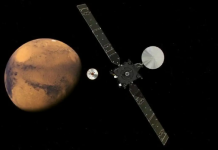An international research team was able to examine the sources of slow earthquakes for the first time to find out what conditions caused slow earthquakes. The study can be an important basis for explaining slow earthquakes.
Slow earthquakes, also known as slow drift, resemble sudden and regular earthquakes. However, slow earthquakes can last for days or months. Scientists have conducted a study in New Zealand that is related to these slow earthquakes that have caused major problems in some areas.
A drilling of 1 km at 3.5 km depth of sea level was carried out on the shores of New Zealand. In this way, the researchers managed to reach the fault lines that caused slow earthquakes. Scientists who reached the faults were able to characterize the fault line based on the crushing of the rocks in the fault area.
In the article published in the journal Science Advances about slow earthquakes, it was stated that the dimensions, types and physical properties of the fault areas that caused slow earthquakes formed a rough sea bottom topography composed of different rocks. Scientists looked at the rock types and their properties found in the fault zone. The researchers also looked at whether these rocks would trigger more important earthquakes and tsunami.
Co-author of the article published in Science Advances, Dr. Cardiff University School of Earth and Ocean Sciences. Ake Fagereng said that his work was the first to collect samples of rocks causing slow earthquakes. Fagereng said that its hard and soft rocks are a starting point for their efforts to create models based on their specified characteristics.
In 2002, a slow slip was detected on the San Andreas fault in California. However, how, where and why the slow earthquake event on this fault occurred and what triggered the fault could not be found. Continuing to work on slow earthquakes, scientists made exploration trips with the JOIDES research vessel in the Hikurangi sunk area of New Zealand in 2017 and 2018 to discover slow earthquake faults. In this study, scientists took samples of rocks from the source region of slow earthquake events using scientific drilling methods on the ocean floor.
Hikurangi sinking area is the largest earthquake fault zone in New Zealand. This region is also one of the most suitable areas to study slow earthquakes. Because earthquake events in this region occur in an area close to the sea floor, it is relatively easy to collect rock samples.
It was determined that the Kaikoura earthquake in New Zealand in 2016 caused a series of major slow earthquakes in the Hikurangi region. The slow earthquake in the region continued for months following the Kaikoura earthquake.
Researchers working in the area used two soundings to take samples from the slow earthquake fault. The data of the soundings were interpreted together with seismic reflection profiles and sound waves under the earth and pictures of the plates formed in the sea.
The study shows that the coexistence of stone species with opposite properties in the fault area may lead to movements that may cause slow earthquakes in the sea and perhaps in other areas of the land.
Dr. of the New Zealand National Institute for Water and Atmospheric Research. Philip Barnes says that the results of the research may be directly related to the occurrence of earthquakes and volcanic eruptions not only in New Zealand, but in the Pacific Ocean basin countries such as Japan and Costa Rica.






